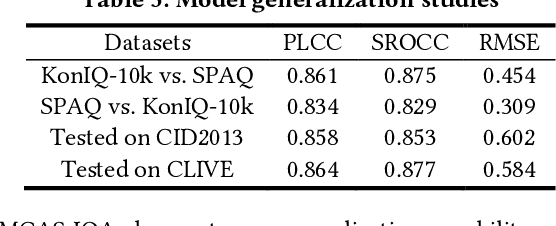Visual Mechanisms Inspired Efficient Transformers for Image and Video Quality Assessment
Paper and Code
Apr 06, 2022



Visual (image, video) quality assessments can be modelled by visual features in different domains, e.g., spatial, frequency, and temporal domains. Perceptual mechanisms in the human visual system (HVS) play a crucial role in generation of quality perception. This paper proposes a general framework for no-reference visual quality assessment using efficient windowed transformer architectures. A lightweight module for multi-stage channel attention is integrated into Swin (shifted window) Transformer. Such module can represent appropriate perceptual mechanisms in image quality assessment (IQA) to build an accurate IQA model. Meanwhile, representative features for image quality perception in the spatial and frequency domains can also be derived from the IQA model, which are then fed into another windowed transformer architecture for video quality assessment (VQA). The VQA model efficiently reuses attention information across local windows to tackle the issue of expensive time and memory complexities of original transformer. Experimental results on both large-scale IQA and VQA databases demonstrate that the proposed quality assessment models outperform other state-of-the-art models by large margins. The complete source code will be published on Github.
 Add to Chrome
Add to Chrome Add to Firefox
Add to Firefox Add to Edge
Add to Edge